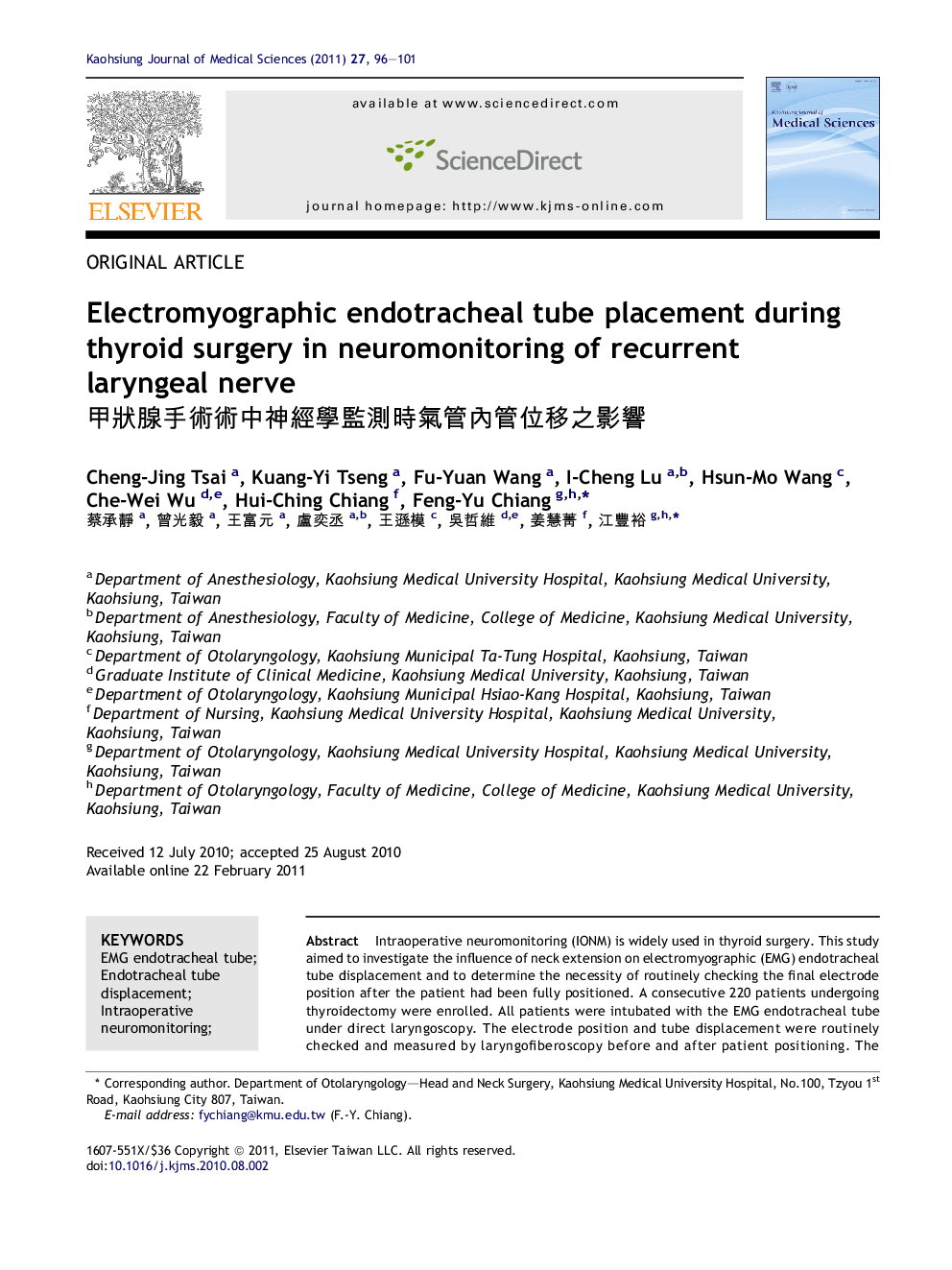| Article ID | Journal | Published Year | Pages | File Type |
|---|---|---|---|---|
| 3486052 | The Kaohsiung Journal of Medical Sciences | 2011 | 6 Pages |
Intraoperative neuromonitoring (IONM) is widely used in thyroid surgery. This study aimed to investigate the influence of neck extension on electromyographic (EMG) endotracheal tube displacement and to determine the necessity of routinely checking the final electrode position after the patient had been fully positioned. A consecutive 220 patients undergoing thyroidectomy were enrolled. All patients were intubated with the EMG endotracheal tube under direct laryngoscopy. The electrode position and tube displacement were routinely checked and measured by laryngofiberoscopy before and after patient positioning. The patients were divided into two groups. In Group I (n = 110), the EMG tube was taped and fixed to the right mouth angle before full neck extension. In Group II (n = 110), the EMG tube was disconnected from the circuit tube and was not taped until full neck extension. In all patients, we ensured that the final electrode position was the optimal position with laryngofiberoscopic examination. The tube displacement after neck extension ranged from 16 mm upward to 4 mm downward in Group I and from 12 mm upward to 5 mm downward in Group II. The rate of tube displacement greater than 10 mm was 12.7% in Group I and 3.6% in Group II. Successful monitoring was achieved in all patients after the final optimal position of electrodes was ensured routinely. The electrode position can be severely displaced after the patient has been fully positioned. Verification of ideal position of electrodes before the beginning of the operation is a necessary step to guarantee functional intraoperative neuromonitoring.
摘要“術中神經學偵測系統”(intraoperative neuromonitoring)廣泛地用在甲狀腺手術,用以避免手術中傷害到喉返神經,但使用時有3∼23%會發生監測功能異常,反而更易造成神經傷害,電極的位置不當是最常見的原因。本篇研究是利用咽喉內視鏡來評估病患頭部後仰時,對氣管內管與電極的影響。作者蒐集了220個接受甲狀腺切除手術的病人,分別在接受測肌電圖的氣管內管(EMG Endotracheal Tube)置入後、頸部後仰後、及整個手術過程中,以內視鏡評估氣管內管、電極與病人聲帶的相對位置變化。病人分為兩組,第一組在插管後以膠帶固定氣管內管在嘴角,再將頸部後仰;第二組是插管後暫不以膠帶固定,頸部後仰後,以內視鏡協助氣管內管的調整與固定氣管內管。兩組最後都以內視鏡確認氣管內管的位置。兩組在管子位移大於1 cm 的比例分別是第一組12.7%,第二組3.6%。在過程中發現,病人在擺位後電極也許嚴重的移位,建議藉內視鏡重新定位與監測氣管內管的位置以達到最好的術中神經偵測系統之功能。
